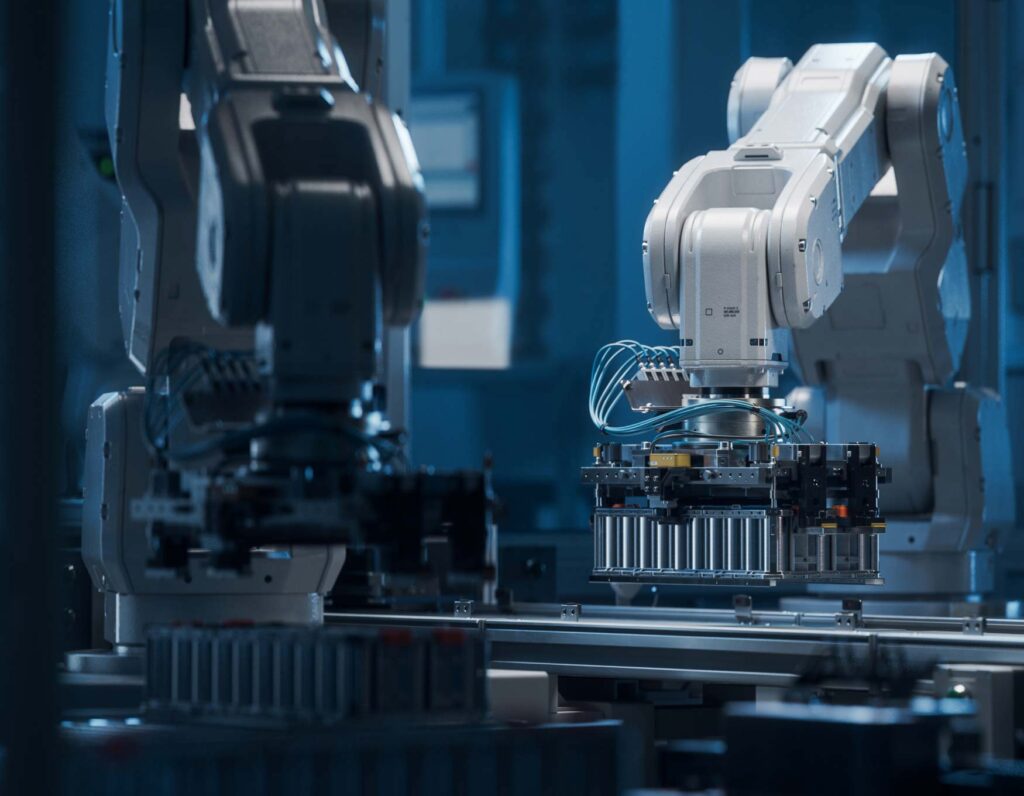Scan this article:
1. Electric vehicles
No matter how we get there, it has become evident that the world needs to rapidly slash carbon emissions to mitigate the impacts of climate change. Those companies that are developing the technology required to be some of the biggest beneficiaries of the US$40 trillion transition.
Personal vehicles are but one area expected to go through an enormous transformation. Passenger cars emitted 3.2 billion metric tons of carbon dioxide last in 2019, falling in 2020 for the first time on record with further reductions necessary.
It positions electric vehicles (EVs) as one of the more promising technologies to be adopted at scale, being projected to represent two in three new car sales by 2040. The number of EVs driving around is projected to swell from 8 million in 2020 to 115 million by the end of the decade.
One obvious way to gain exposure to the trend is to buy individual automakers. Traditional brands including Ford and Volvo plan to be all-electric by 2030 while new players like Tesla and Nio have already become market darlings as they put EVs on the global stage.
Alternatively, investors could buy into those building the infrastructure and charging stations required to make the electric future a reality.
2. Battery tech
But there’s more to the race to zero-emissions than electric cars. Batteries have become increasingly important as a way to store and use energy on demand with broad implications.
It makes sense. While we might be moving quickly towards renewable energy, the sun doesn’t shine all day and the wind doesn’t always blow. As we phase out coal and other fossil fuels, we subsequently need batteries to secure the energy we need on a daily basis.
Accordingly, the demand for lithium ion batteries is estimated to grow ten-fold over the next 10 years as a growing number of nations pledge to go carbon neutral by 2050. In a virtuous cycle, as demand for batteries increases so too does investment and innovation, sending the price of batteries even lower and increasing the demand for them further.
Significantly, many of these developments are occurring close to home. Australia has the third largest lithium reserves in the world, is one of its largest global producers, and is developing its extraction capacity “faster than any other country”, according to Austrade.
Australian miners of battery materials, from lithium to cobalt, are in prime position to supply the demands of global battery makers such as Samsung, LG and BYD. Alternatively, Australian ETFs like ACDC can provide a basket-approach to the growing trend.
3. Semiconductors
From EVs to home appliances and mobile phones, semiconductors, or computer chips, power an increasing number of our devices. By 2030, estimates suggest the semiconductor industry will more than double in value, rising to US$1 trillion. If you include downstream applications, that figure grows to US$4 trillion.
As technology develops further, the appetite for these building blocks will only grow. With everything from 5G and artificial intelligence (AI) to augmented reality, the metaverse and cryptocurrency relying on them, there is an enormous demand for smaller and more powerful chips.
As a result, major semiconductor companies like Intel, TSMC, QCom, Nvidia and AMD could continue to grow for years to come.
4. Cloud computing
Cloud computing essentially describes storing and processing data over the internet rather than a single computer or server. The advantages of this technology are enormous, enabling us to work remotely and quickly process larger amounts of data while we do it.
As flexible work arrangements become commonplace, it’s not hard to see the advantages of this technology and its many potential applications. It’s why analysts expect cloud computing to be worth more than US$1 trillion in the next five years alone.
Like with semiconductors, new technologies will require huge amounts of data to be processed at even quicker rates, wherever we are in the world. The cloud will be one crucial element to this with Microsoft, Amazon, Google, IBM, Salesforce and other giants investing heavily in it.
5. Cybersecurity
New technology creates its own challenges and perhaps none more pressing than how well we can secure it against bad actors. As our lives go increasingly digital, the figures around cybersecurity are staggering.
Over the past 13 years, the cybersecurity industry has grown 35 times larger and is on track to be worth $600 billion by 2030. Meanwhile, the world is struggling to keep up with the demand for cybersecurity skills. Right now there are 3.5 million unfilled cybersecurity positions globally, according to estimates.
It’s no wonder given the size of the problem. Cybercrime this year has cost an estimated US$6 trillion, creating an enormous market for companies like CrowdStrike, Cisco, and CloudFlare. Fittingly, one of the fastest-growing cybersecurity segments is cloud security.
Conclusion
Super funds are increasingly allowing members to exert more control over how they allocate their portfolio. Given the long-term horizon of superannuation, there’s a good case to be made for investing in the companies building the world into which we’ll retire.
By keeping an eye on global trends and structural transformations, Australians might be able to not only help fund the world of tomorrow but to profit from it. Their future retired selves might just thank them for it.

Become a part of
our investor community
Why you should join us:
- Join free and invest with no monthly account fees.
- Fund your account in real time with PayID.
- Get investing with brokerage from $2. Other fees may apply for U.S. shares.
Read our latest articles
Make knowledge your superpower and up your skills and know-how with our news, educational tools and resources.





![The top ASX lithium stocks by trade volume and performance [2023]](https://www.superhero.com.au/wp-content/uploads/2023/06/24-03_blog_news_toplithiumstocks_hero@2x-1024x796.jpg)



















